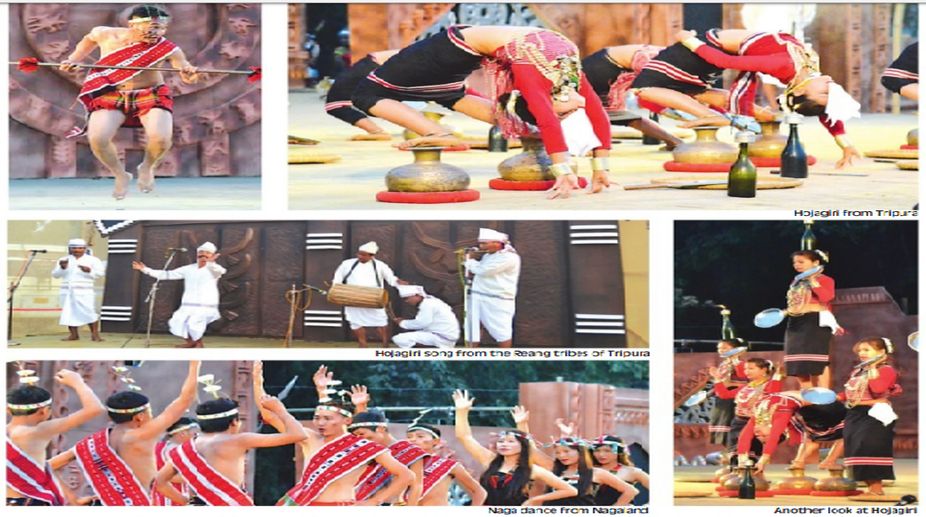HC stays Assam govt’s order to remove DA from tea workers’ wages
Granting the state government’s request for time to submit a response clarifying the state's position, the court stayed the removal of the Dearness Allowance (DA).

The Tribal Festival in Assam presenting various tribal troupes. (PHOTO: SNS)
The National School of Drama, for the last five years, has been searching the roots of Indian culture by organising tribal festivals presenting various tribal troupes from all over India. Ratan Thiyam, globally-reputed theatre personality as well as Chairman of NSD, has just completed hosting such a festival in Tinsukia, Assam as the seventh event of this particular series titled ‘ Adivasi Adibimb’. In fact this project is the brain-child of Thiyam who thinks, quite rightly that our rich tradition of tribal culture is at present in a moribund state. Hence this effort to preserve and protect it.
This time the ‘Adivasi Adibimb’, the three-day National Tribal Festival of Music, Dance and Drama witnessed programmes by 32 troupes from seven states of the North East i.e. Assam, Meghalaya, Arunachal Pradesh, Tripura, Nagaland, Manipur and Mizoram apart from Sikkim and other states of India including West Bengal.
Advertisement
The audience had a grand opportunity to see the dance of Assam’s Mising Bihu, Deuri, Rabha (Goalpara), Bodo dance (Guwahati), very special Jhumur dance (based on Karam Puja) of the tea tribe (Dibrugarh). Arunachal Pradesh’s mountainous region’s Galung Dance (to worship their God for cultivation) was totally different from other tribes.
Advertisement
The host city Tinsukia brought a variety of dance items by different groups. The Limbuguri Tea Estate’s production Odiya Dance had a unique style of presentation while their Santhali dance ‘Dong’ bore a particular mark of the ‘Tea Tribe’.
Meghalaya’s Wangla dance needs specially mention for its inimitable style of performance by Garo Tribes (from Shillong’s Forest Colony) with drum beats and chanting for God’s blessings.
Manipur’s Rongmei Kabui is popular as bee dance, and showed vigorous footwork and sharp, graceful body movements. Tripura’s Hojagiri Dance reminds us of our ‘Kojagori’ rituals. It creates excitement due to its magical exercise of balance by supporting their body on another dancer’s shoulder with weight in hands.
Chakhesang Naga Dance of Dimapur is the very symbol of bravery and courage. The Jharkhand based troupe presented Chhau Dance which was highly entertaining and full of energy. The dancers wearing masks and costume of lions mesmerized the audience by performing martial arts and acrobatics with great agility.
Our very own Santhal dance by Birbhum Blossom Theatre (Director Partha Gupta) was performed with a soothing rhythm while the mesmerizing music of Dhamsa and Madal stole the show. Three separate stages created with clay were for music, dance and drama respectively.
The dramas, ‘Kurbani Bekar Nahi Jayegi’ (Jharkhand) based on the sacrifice of freedom fighter Birsa Munda, and ‘Lamana’ (Manipur) which revolves around suppression on poor Adivasi people showed new techniques and thoughts developed independently outside the influence of our urban theatre. Of great academic interest yet drawing a large audience was a very important seminar session on Tribal Life and Culture.
Academicians and scholars like Anil Saikia, Papiya Roy, Ram Sasoni and Srabanti Choudhuri shared their views on the subject initiated by Ratan Thiyam. The main festival was inaugurated by Mr Ratan Thiyam along with Mr Binod Hazarika and Mr Sanjoy Kishan, the MLAs of the region.
Advertisement